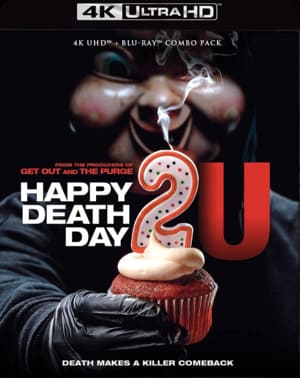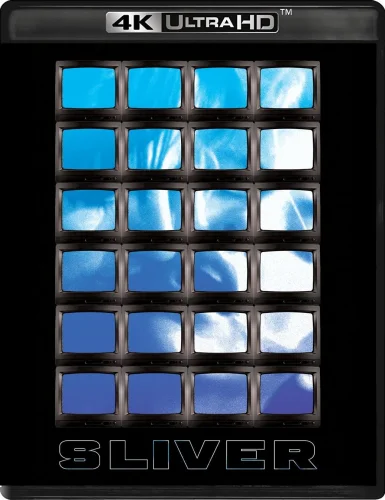Story Movie
Jessica has just been released from a psychiatric hospital. Her husband decides that she needs fresh air for her final recovery, and together with Jessica and a friend he moves to a newly purchased country house. Approaching the house, Jessica begins to hear voices and see strange things, but believes that it only seems to her. But the house is not empty. A charming homeless hippie girl named Emily has taken up residence in it. Jessica feels sorry for Emily and begs her to stay. It'll be more fun together. And with Emily is really fun - she is just the soul of the company and plays the guitar perfectly. But why does she look so much like the girl in the old portrait hanging in the house? Why are all the residents of the neighboring small town behaving so strangely? Maybe it's just a play of Jessica's sick imagination, or maybe not.
Review 4K Movie
Jessica's life started with a clean slate. After she got out of the mental hospital, she and her husband Duncan decided to swap the big city for the countryside, buying a house there to live a quiet life, work in their big garden, and swim in the lake on hot summer days. They brought their friend Woody with them to help them settle into their new home. Life in the town seems sleepy, quiet, and peaceful. But Jessica begins to hear voices and strange sounds again, and she starts having visions. This frightens her, because she doesn't want to go back to the clinic, and she tries to hide her fear from those around her. In addition, it turns out that Emily, a hippie girl who thought their house was abandoned, has moved in. The red-haired beauty quickly wins over the men, and Jessica, despite her inner anxiety, invites the girl to stay with them. She would have someone to talk to, because the townspeople greeted the newcomers with suspicion and obvious hostility. And for some reason, all the residents had bandages around their necks...
John D. Hancock directed this film, based on a story by Joseph Sheridan Le Fanu, a classic of Gothic prose, whose works have been adapted for the screen many times. These include the famous “Alucarda” and “Carmilla,” a novel that inspired Bram Stoker himself. Le Fanu was also adapted by Carl Theodor Dreyer, who created his masterpiece, “Vampire: The Dream of Alan Grey.” Roger Vadim also turned to the writer's work, shooting the film “And Die of Pleasure.” Hancock's story is set in the present day at the time of the film's creation, with an emphasis on the popular cinematic theme of madness, a borderline state of mind, which provided an excellent opportunity for an ambiguous interpretation of events. As the viewer follows the plot, they wonder whether all these mystical horrors are really happening or are just the product of the heroine's fevered mind. In Rosemary's Baby, this duality of perception and ending elevated the film to the level of a masterpiece, coupled with the flawless performances of Mia Farrow and the other actors.
Who knows, if the cast in Jessica had been stronger, perhaps the fate of the film would have been different. But the actors are the weakest link in the film. A small budget is not an obstacle when you have a good plot and the right directorial structure, a skillful build-up of a mysterious and frightening atmosphere, even with slowly developing events, if there is strong acting. All the components, except for a strong cast, are present in the film. But it is precisely acting skill that is important in films with an intimate plot and a small number of characters. Especially if the focus is on the mental instability and borderline state of the characters. Examples of such performances, apart from the aforementioned Rosemary's Baby, include Roman Polanski's Repulsion and Lamberto Bava's Macabre. The role of Jessica proved too much for Zora Lampert. To show a state of existence between reality and unreality, it is not enough to simply stand in front of the camera with a distracted smile on your face and indifferent eyes. The role proved too emotionally and psychologically complex for Lampert, and the other actors' performances were mediocre. So the entourage also failed to play the “king.” Precisely because the actors' skills do not make you “stick to the screen,” a good half of the film is perceived as a drama rather than a horror movie. The slow development of the plot may seem boring to modern viewers.
Rare mysterious and frightening moments gradually weave around the heroine into a single, drawn-out knot, becoming increasingly intense and enigmatic. Like separate pieces of a puzzle, they come together to form a single picture. We see everything through Jessica's eyes, and just like her, we don't know what is real and what only she sees, afraid to admit her fears to anyone. And the fear in her soul grows: a strange voice calling her, a silent girl in white in the cemetery, beckoning her to follow. But her husband saw her too! So the girl is real? Then why did the antique dealer's corpse, to which the mute girl led them, suddenly disappear when Jessica called everyone to it? A hallucination? And what about the other strange girl in an old dress who rose from the depths of the lake and tried to drag Jessica to the bottom? Who was she? Local residents said that a hundred years ago, Abigail, the daughter of the former owners of the house, drowned the day before her wedding. And she still lives in her house to this day, having become a vampire, according to urban legend. A portrait of that family remains in the attic from the previous owners, and Abigail in it looks just like Emily, even her hairstyle is almost the same. Does no one else notice this? Emily smiles and says she will never leave, and even seduces Jessica's husband and their friend Woody. The townspeople avoid her, refusing to talk to her. They behave very strangely in general. Jessica's fears grow, and she has no one to share them with. Her husband is emotionally distancing himself from her, and Emily even tries to drown her, although no one believes it. The atmosphere of horror thickens, Jessica rushes about, suffocating in it, trying to convince herself that it's all just her imagination, that it's just a terrible dream... She'll wake up, and everything will disappear without a trace in the rays of the morning sun... But there is no sun, and the darkness continues to thicken in her mind. Or is all this really happening, and is she really surrounded by dead people who are hunting her?
The cinematography is good, the story sags in places, but picks up pace in the second half of the film. However, the slow, contemplative pace of the plot is typical of the cinema of those years. You gradually immerse yourself in it, like Jessica in that very lake, from the bottom of which horror rose, trying to take possession of her. Both Jessica and the audience know that there is no such thing as a former schizophrenic, and this very knowledge keeps everyone in suspense: Jessica, her husband, Emily, the audience. It's like the proverbial gun on the wall that is bound to go off. The only question is when, and at whom? And most importantly, who will pull the trigger? Who is really the victim, and who is the hunter and killer? The viewer has to separate reality from the projections of the inflamed, sick mind of poor, fragile, and helpless Jessica, who is gripped by fear, suspicion, and sticky horror.
The director succeeded in achieving the goal stated in the title: to scare Jessica to death. And John D. Hancock also managed to scare not only Jessica, but also the audience. Maybe not everyone, but Stephen King himself called this film one of his favorites. And the master knows a thing or two about fear, as well as the exceptional ability to scare others to death. Try it and see if it scares you!





 [/full-link]
[/full-link]

